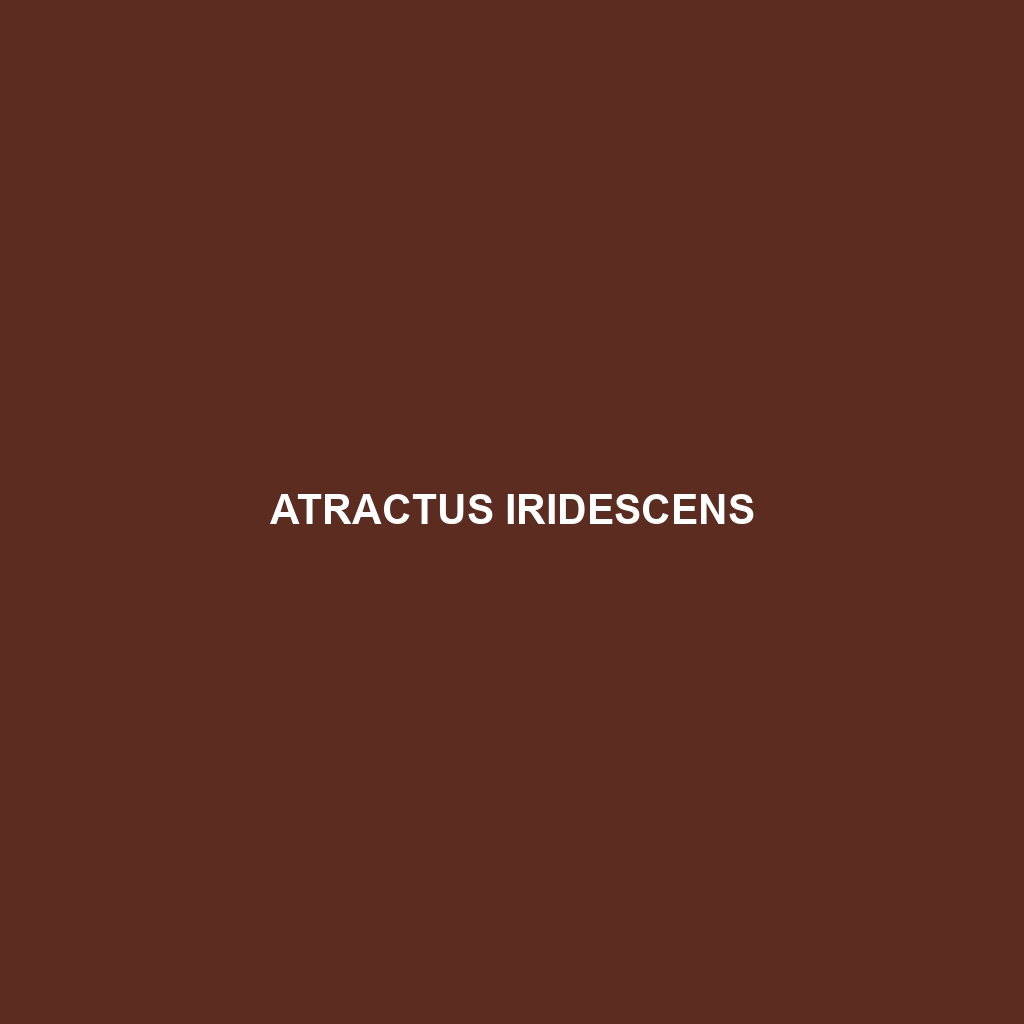Atractus iridescens: A Comprehensive Species Description
Common Name: Atractus iridescens
Scientific Name: Atractus iridescens
Habitat
Atractus iridescens is primarily found in tropical regions of Central and South America, particularly in the rainforests of Colombia and Ecuador. This species thrives in moist environments, often residing in leaf litter, under stones, or within rotting logs, where it can effectively camouflage itself from predators.
Physical Characteristics
Atractus iridescens typically reaches a length of 30 to 50 centimeters. Its striking coloration features a glossy, iridescent sheen that ranges from dark brown to black with vivid yellow or cream bands. The elongated, slender body and small head distinguish it from other snakes in its habitat. Additionally, its smooth scales contribute to its unique appearance.
Behavior
This species displays predominantly nocturnal behaviors, being most active during the night. Atractus iridescens is known for its secretive nature, often remaining hidden beneath foliage and items on the forest floor. When threatened, it may exhibit a defensive posture or, in some cases, remain motionless until the danger has passed. Its elusive nature makes it an object of interest among herpetologists and wildlife enthusiasts alike.
Diet
Atractus iridescens primarily feeds on small invertebrates, including earthworms, slugs, and soft-bodied insects. This snake employs a constricting method to subdue its prey, showcasing its capability as a predator within the ecosystem. Understanding the feeding habits of this species helps in appreciating its role in controlling the invertebrate population in its habitat.
Reproduction
The reproductive habits of Atractus iridescens are somewhat elusive due to its secretive lifestyle. However, it is known that the breeding season occurs during the rainy months when food is abundant. Females generally lay 4 to 8 eggs, which hatch after a period of incubation. These hatchlings are miniature versions of the adults and quickly become independent, foraging for food shortly after birth.
Conservation Status
As of the latest assessments, Atractus iridescens is classified as “Vulnerable” on the IUCN Red List. The main threats to this species include habitat destruction due to deforestation and agricultural expansion. Conservation efforts are essential to protect the remaining populations and their natural habitats.
Interesting Facts
One fascinating aspect of Atractus iridescens is its ability to change color slightly depending on environmental conditions, which aids in its camouflage. Additionally, it is one of the few snakes known for its striking iridescent coloration, making it a sought-after species for herpetological research and photography.
Role in Ecosystem
Atractus iridescens plays a crucial role in its ecosystem as both a predator and prey. By controlling the invertebrate population, it helps maintain the ecological balance. Furthermore, it serves as a food source for larger predators, thus contributing to the overall biodiversity of its habitat.
This structured HTML format provides a comprehensive overview of Atractus iridescens, utilizing relevant keywords for SEO and ensuring engagement with a wide audience.
